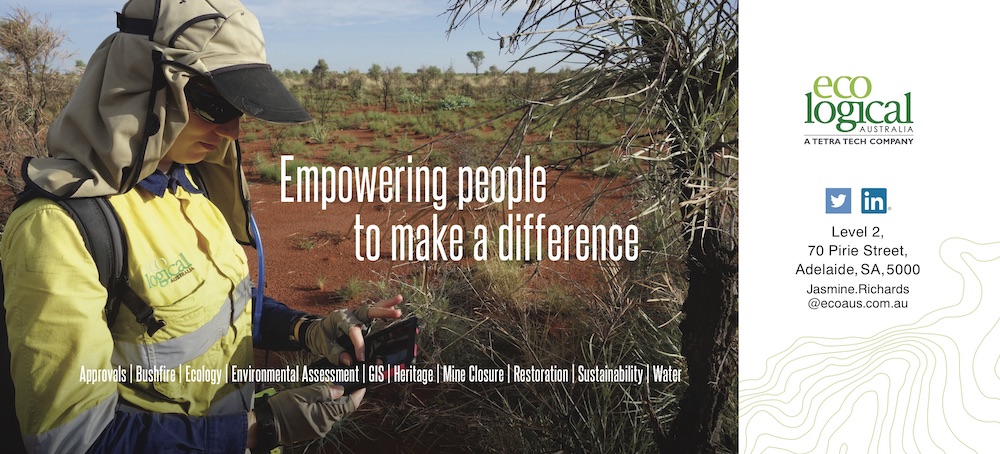
Half a century of gas from Moomba
Santos began small and grew to be the state’s largest company, with plenty of help from a lot of proud South Australians
About 65 years ago, a group of explorers from a tiny company named Santos took a punt on finding oil and gas in the Cooper Basin in South Australia’s far north. Few dreamt of the scope of their success or how important the company would be in shaping the future of this state.
"Geologists are the great dreamers of the STEM world – they see the big vision and then they work with others to test the vision has a real outcome,” says Michele Bardy, head of Santos’ corporate planning. “It’s fair to say the geologists of the world have been combing the planet to see where these basins and opportunities lie. Australia is a great environment for those (geological) structures for accumulations of oil and gas and someone decided it was worth taking a gamble and going and looking.
” The geologists drilled nine dry holes before striking paydirt at what became known as the Gidgealpa wells back in 1963. As it became clear that a prodigious resource had been tapped, then Premier Tom Playford was one of the excited officials to climb into a car to have a look at the Moomba fields for himself.
Ten years of hard work, including further exploration, building a gas processing plant and camp infrastructure at Moomba and a publicly owned pipeline south to Adelaide, meant the first home in Adelaide received a domestic gas flow in 1969, just over 50 years ago. The Torrens Island power station was also rapidly converted to gas and is the largest gas-fired plant in the nation.
“Once they worked out how to crack the code of the Cooper Basin, it really started to blossom from that point on,” Bardy says. Moomba itself is now an industrial site and a camp for hundreds of workers exploring, extracting and processing the gas and oil.
It also supports many in surrounding communities who contract for Santos and supply goods and services. Pipelines have also been built into NSW and Queensland, but the fields supply approximately two thirds of SA’s domestic gas supply as well as fueling industry. “Every day, when someone puts their heater or cook top on, that gas is generally coming from Moomba,” she says. “We have people who are working all over the Basin – there’s still exploration going on.
One of the exciting things about being part of the Moomba/Cooper Basin story is it is known globally as a super Basin. It’s been an extraordinary resource for SA and Australia, and it continues to give up its secrets periodically. After nearly 60 years of yielding oil and gas, the Cooper Basin shows no signs of diminishing. It has just posted its highest gas delivery for nine years. “There’s not too many resources around the globe that produce consistently over 50-plus years,” Bardy says.
“But there’s still plenty to understand. One of the reasons we are keen to keep exploring is so it becomes part of the low-carbon future we all see before us.” The company has recently shared its plans for a carbon capture and storage (CCS) project at Moomba – taking carbon dioxide from its own operations and storing it deep underground from whence it came. “That’s not only important from a carbon perspective but is also a key enabler to allow us to explore, as a nation, the hydrogen economy,” Bardy says.
“There’s a couple of ways to bring hydrogen to life in our future (including) converting gas into hydrogen, then capturing the carbon dioxide and reinjecting it into the underground reservoir.” As Moomba has grown, so has Santos, to become the state’s largest company with its corporate headquarters in Adelaide. In 50 years it has faced its share of challenges – something that is part of the very nature of the oil and gas industry, Bardy says.
“Our business actually attracts people who like challenges. Having a company like Santos provides huge opportunities for people who are already skilled but also young people who are looking for challenging careers,” she says. Careers from science to corporate roles are on offer in a company already directly and indirectly employing thousands. Bardy sees Santos’ future as inextricably linked to that of the state, and both futures are exciting. “We are very proud to be part of the South Australian community,” she says. “We have access to, and we attract highly skilled people here. “Our CCS project is an opportunity that opens up the next 50 years. It’s exciting to be part of an industry that’s going to create part of the solution for the future.”